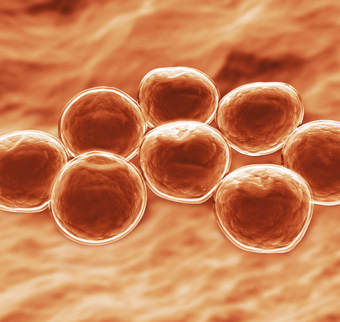Dublin dental scientists identify new form of MRSA
Researchers discover strain believed to be of animal origin
Researchers from Dublin University Dental Hospital have identified a new type of methicillin resistant Staphylococcus aureus (MRSA), believed to be of animal origin, in hospitalised patients.
The findings provide significant insights into how new strains of MRSA emerge and highlight the potential for the transmission of infectious agents from animals to humans.
The study, which was funded by the Dublin Dental University Hospital Microbiology Unit, was headed-up by Professor David Coleman, Dr Anna Shore and Ms Emily Deasy at Trinity’s School of Dental Science, Division of Biosciences.
Together with the National MRSA Reference Laboratory at St James’s Hospital and colleagues at the University of Dresden, the team identified the new MRSA strain using high throughput DNA microarray screening.
Complete genome sequencing of one of the new MRSA isolates revealed that this strain is distinctly different to previously described MRSA from elsewhere in the world.
MRSA strains are characterised by the presence of a mobile DNA cassette (known as SCCmec) encoding genes that confer resistance to beta-lactam antibiotics including methicillin and recombinase genes that allow the cassette to transfer into methicillin-susceptible S. aureus.
This strain carries a new type of SCCmec that is very different to any described previously in MRSA or in any other organism. Consequently, the new strain is not detected as MRSA by DNA-based PCR assays.

